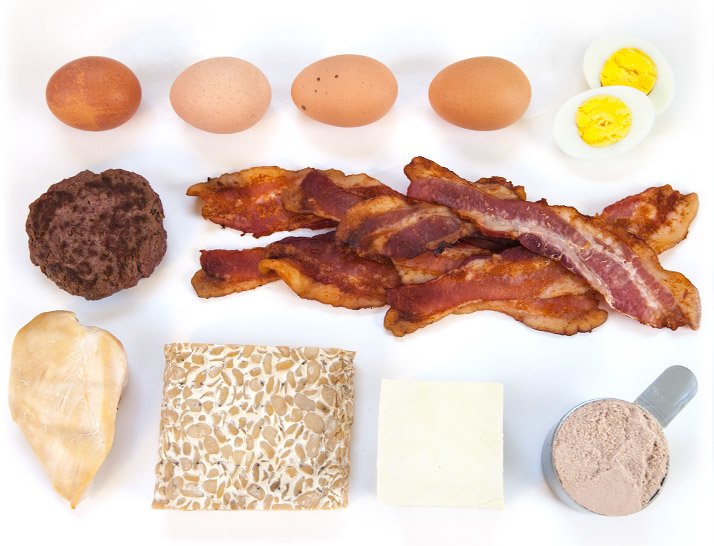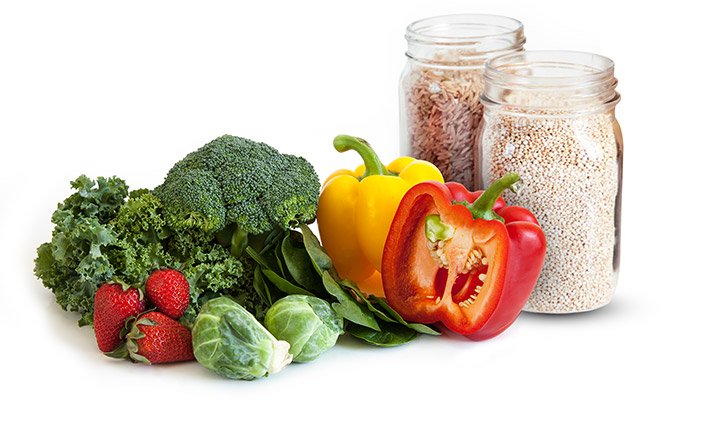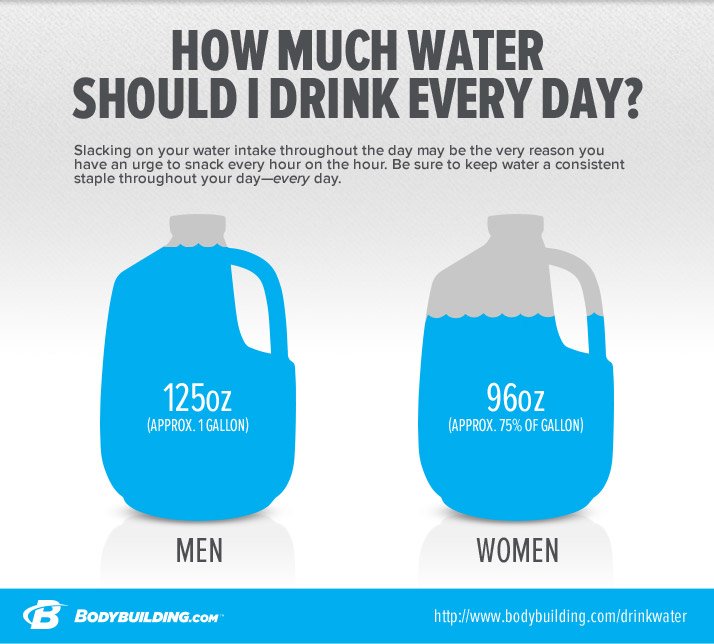
4 Nutrition Upgrades To Accelerate Your Fat Loss!
Turn an ordinary weight-loss diet into an extraordinary fat-burning plan with these 4 must-read nutritional upgrades!
Main Page | Burn More Fat in Every Workout | Accelerate Your Fat Loss
Ace Your Summer Shred | Up Your Fat-Loss Supplement Game
Of all the battles in your war against fat, the one waged in the kitchen will have the greatest effect on your success. If you feel awful, the answer might lie in what you're eating. If you feel great and the fat seems to be melting off by the day, the answer is there, too.
If you're aiming for extraordinary results during your 30-day shred, don't trust the ordinary way of doing things to work for you. These four foods can make the difference in your diet that allows you to start burning more fat today.
Ordinary Assume the basic calculations will work
Extraordinary Monitor and alter your deficit
The first step to setting up a diet is to determine how many calories (and macros, if you want to get detailed) you need to place yourself in enough of a deficit. A popular and convenient approach is to use one of many online fitness calculators to provide an estimation of your total daily energy expenditure (TDEE).

These simple-to-use calculators often require you to provide a few pieces of basic information about your size, exercise habits, and goals, then spit out an estimated number of calories (and macros) per day to help you reach that goal.
If you haven't done so yet, get started with this calculator, entering "fat loss" as your goal:
TDEE Calculator
Using a calculator like this one is an excellent first step, but these calculators are only estimates, and calorie needs are highly individualized. A calculator can handle only so many variables. Your lifestyle, age, sex, height, weight, training habits, and dieting history all have major impacts on your daily needs. No calculator can take them all into account for the long term.
If you're looking to dial in your physique, you need to dial in your approach, too. Once you have the calculator-generated macros, start by sticking with them each day while simultaneously tracking your weight a few days per week.
Observe your trend in weight over the first 7-10 days, and use this information to determine whether or not you're actually in a caloric deficit (losing weight) and the next steps (if any) you need to take. For example, if your weight stays the same, or you even gain weight, you're not in a deficit. However, if you drop a few pounds—no more than 3-5—in the first 7-10 days, you're right where you want to be.
Adjust your nutritional intake moving forward so that you're losing 0.5-1.0 percent of your body weight per week. For a 130-pound woman, one pound a week is just about right. Losing weight any faster than this significantly increases your risk of muscle loss and the likelihood that you'll burn out sometime soon.
Ordinary Stick with your normal protein level
Extraordinary Pump up your protein
It's no secret that protein is your best friend when trying to build muscle. It plays a major role in instigating growth and promoting recovery, which ultimately allows you to get bigger and stronger.
Protein isn't limited to gaining size, however; it also plays a major role in weight loss. Because your efforts require a caloric deficit, you're at risk for muscle loss and crazy hunger. The leaner you are, the greater those risks. Increasing your daily protein beyond the standard 1 gram per pound of body weight significantly reduces the likelihood of both happening.

Research suggests that consuming 1.0-1.25 grams of protein per pound of body weight may be the baseline for minimizing muscle loss during a diet, particularly during a low-calorie or prolonged diet.1-4 For a 200-pound male, the difference is an 50 additional grams of protein per day, and believe me, that 50 grams makes a difference!
What's to be gained through those extra grams? First off, hunger will be less likely to follow you like a shadow on a hot summer's day. This is especially true the longer and harsher your diet is. Protein slows down digestion, thus keeping food in your stomach longer and ultimately helping to promote fullness. What's more, protein has a powerful effect on satiety hormones.
When protein reaches the stomach, it triggers the release of cholecystokinin (CCK), a gut hormone that ultimately sends signals to the satiety center of your brain instructing it to "put the fork down."
Ordinary Cut carbs left and right
Extraordinary Time carbs
Most ill-informed dieters eager to blast away body fat immediately cut out all carbs, enduring weeks of lethargy and painful cravings in order to burn fat. But there are more horror stories than success stories with this approach.

Trainer and Cellucor athlete Jen Jewell prefers to keep some fuel in her tank for training, so she relies on calculated consumption rather than total deprivation. "When I'm cutting, I get more particular about timing my carb intake and make sure to get the majority of my carbs for the day in my pre- and post-workout meals," Jewell says.
Jewell's approach dovetails well with another macronutrient-timing method: carb cycling. In its basic form, carb cycling involves manipulating the amount of carbs you consume each day in relation to your training. You'll eat a higher amount on hard training days or when you're working larger muscle groups (think leg day), and fewer carbs on light days (think arm day) or nontraining days.
A great starting place is to distribute carbohydrates as follows:
| Training Day Classification | Carbohydrates Per Day |
|---|---|
| Nontraining | 0.5 grams per pound of body weight |
| Light | 1.0 grams per pound of body weight |
| Hard | 1.5 grams per pound of body weight |
The upside of both approaches is that they'll ensure you're fueled appropriately for training. A high-volume leg day demands much more fuel than a quick arm blast, but that fuel is best consumed pre- and post-workout. Or, if you're going to train legs in the morning, eat your carbs the night before, since it can take roughly four hours for you to be able to use them as fuel.
Ordinary Drink when thirsty
Extraordinary Use H2O for appetite control and performance
Macros rightly steal the spotlight when it comes to fine-tuning a diet, but water plays a crucial role in the background. Unless you make a concerted effort to consume more, it's not uncommon to go hours without fluids and end up dehydrated.
Even a little dehydration—the level where you're just slightly thirsty—is sufficient to impair strength, speed, focus, mood, and power. It also predisposes you to increased hunger. In short, failing to drink enough fluids can derail your dieting efforts in a heartbeat.

Fluid needs are highly individualized and are impacted by your gender, size, age, and type of training, in addition to altitude, temperature, and humidity. To start, women should aim to drink no less than 96 ounces per day, and men 125.5 This doesn't even begin to include your exercise needs. For every 15 minutes of exercise, make sure you consume an additional 5-8 ounces of fluids during your activity.
In addition to supporting performance, water consumption helps you feel full. When you drink water, it fills your stomach, which is a satiety signal in and of itself. A study published in a 2010 issue of Obesity found that individuals who consumed 16 ounces of fluids before a meal decreased the amount of food eaten at the meal, which led to greater weight loss compared to individuals who didn't consume water before their meals.6

Once you've dialed in that combination of sound nutrition, diligent exercise, and overall consistency, smart supplementation may provide that last push you need to meet your goals.
Main Page | Burn More Fat in Every Workout | Accelerate Your Fat Loss
Ace Your Summer Shred | Up Your Fat-Loss Supplement Game
References
- Mäestu, J., Eliakim, A., Jürimäe, J., Valter, I., & Jürimäe, T. (2010). Anabolic and catabolic hormones and energy balance of the male bodybuilders during the preparation for the competition. The Journal of Strength & Conditioning Research, 24(4), 1074-1081.
- Butterfield, G. E. (1987). Whole-body protein utilization in humans. Medicine and Science in Sports and Exercise, 19(5 Suppl), S157-65.
- Phillips, S. M., & Van Loon, L. J. (2011). Dietary protein for athletes: from requirements to optimum adaptation. Journal of Sports Sciences, 29(sup1), S29-S38.
- Celejowa, I., & Homa, M. (1970). Food intake, nitrogen and energy balance in Polish weight lifters, during a training camp. Annals of Nutrition and Metabolism, 12(5), 259-274.
- Rodriguez, N. R., DiMarco, N. M., & Langley, S. (2009). Position of the American dietetic association, dietitians of Canada, and the American college of sports medicine: nutrition and athletic performance. Journal of the American Dietetic Association, 109(3), 509-527.
- Dennis, E. A., Dengo, A. L., Comber, D. L., Flack, K. D., Savla, J., Davy, K. P., & Davy, B. M. (2010). Water Consumption Increases Weight Loss During a Hypocaloric Diet Intervention in Middle-aged and Older Adults. Obesity, 18(2), 300-307.
- Acheson, K. J., Gremaud, G., Meirim, I., Montigon, F., Krebs, Y., Fay, L. B., ... & Tappy, L. (2004). Metabolic effects of caffeine in humans: lipid oxidation or futile cycling? The American Journal of Clinical Nutrition, 79(1), 40-46.
- Sökmen, B., Armstrong, L. E., Kraemer, W. J., Casa, D. J., Dias, J. C., Judelson, D. A., & Maresh, C. M. (2008). Caffeine use in sports: considerations for the athlete. The Journal of Strength & Conditioning Research, 22(3), 978-986.
- Gavrieli, A., Karfopoulou, E., Kardatou, E., Spyreli, E., Fragopoulou, E., Mantzoros, C. S., & Yannakoulia, M. (2013). Effect of different amounts of coffee on dietary intake and appetite of normal-weight and overweight/obese individuals. Obesity, 21(6), 1127-1132.

